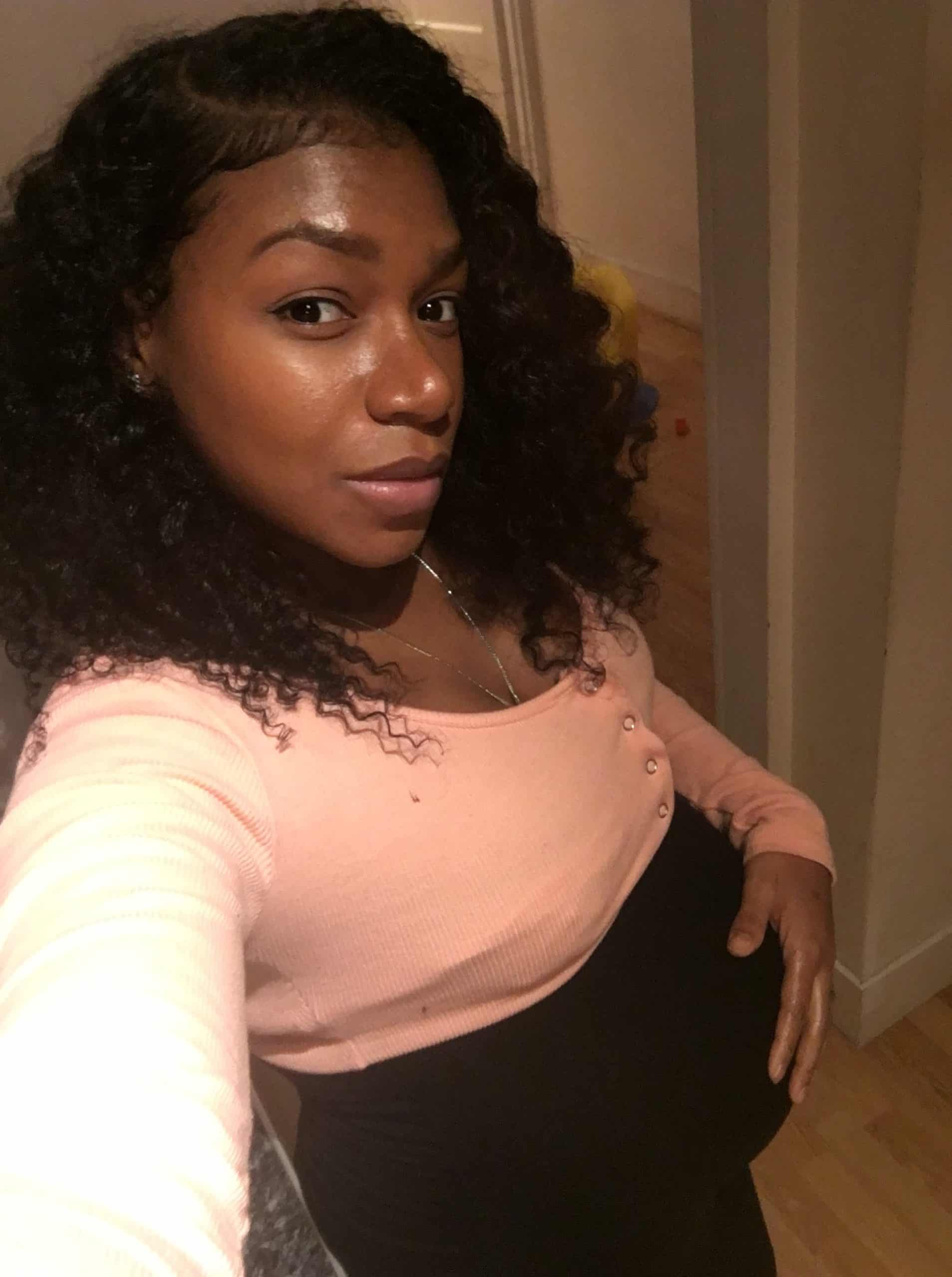Teaching a toddler not to hit can be a challenging task for parents and caregivers. Toddlers are in the process of learning how to communicate their needs and emotions, and hitting may be one of the ways they express themselves.
However, hitting can cause harm to others and is not an acceptable behavior. In this article, we will explore effective strategies for teaching toddlers not to hit.
Understanding toddler behavior is key to addressing hitting. Toddlers may hit due to frustration, lack of communication skills, or a desire for attention. It is important for parents and caregivers to recognize the underlying causes of hitting and respond appropriately.
By creating a calm and supportive environment, setting boundaries and limits, and teaching alternative ways to express emotions, parents and caregivers can help toddlers learn positive behaviors.
Key Takeaways
- Understanding toddler behavior is key to addressing hitting.
- Creating a calm and supportive environment, setting boundaries and limits, and teaching alternative ways to express emotions can help toddlers learn positive behaviors.
- Consistency in handling negative behavior and seeking professional help when necessary can also be effective strategies for teaching toddlers not to hit.
Understanding Toddler Behavior
Toddlers are at a developmental stage where they are learning to communicate and express themselves. Hitting behavior is common among toddlers, and it can be a challenging behavior to manage for parents and caregivers. Understanding why toddlers hit can help in developing strategies to prevent and manage this behavior.
Hitting behavior among toddlers is not necessarily a sign of aggression. Toddlers are impulsive and are still learning how to control their emotions. Hitting can be a way for them to express frustration or anger when they don’t have the words to communicate their feelings.
It can also be a way for them to test limits and explore cause and effect.
Child development plays a significant role in hitting behavior. Toddlers are still learning social skills, and hitting can be a way for them to interact with others. They may not understand that hitting can hurt others or that it is not an appropriate way to communicate.
It is essential to remember that hitting behavior is a phase that most toddlers will outgrow as they develop better communication skills and emotional regulation. However, it is still important to address this behavior to prevent it from becoming a habit.
In conclusion, understanding toddler behavior is crucial in preventing and managing hitting behavior. Toddlers are still learning how to communicate and express themselves, and hitting can be a way for them to do so.
By recognizing the reasons behind this behavior, parents and caregivers can develop strategies to prevent and manage it effectively.
Why Toddlers Hit
Toddlers are known to hit, and it can be a challenging behavior to manage. Understanding the reasons why toddlers hit can help parents and caregivers address the underlying causes and prevent future incidents.
One common reason why toddlers hit is frustration. Toddlers are still developing their communication skills, and when they are unable to express themselves, they may resort to hitting. For example, if a toddler is trying to play with a toy, and another child takes it away, the toddler may hit the other child out of frustration.
Another reason why toddlers hit is anger. Toddlers are still learning how to manage their emotions, and when they become angry, they may hit as a way to release their feelings. For example, if a toddler is told they cannot have a cookie, they may hit the person who denied them the cookie.
Stress can also be a trigger for hitting in toddlers. Toddlers may become stressed in unfamiliar situations, or when there are changes in their routine. For example, if a toddler is starting daycare for the first time, they may hit other children out of stress and anxiety.
Toddlers may also hit when they are experiencing big emotions. They may not have the language skills to express their feelings, so hitting may be their way of communicating their emotions. For example, if a toddler is feeling overwhelmed, they may hit as a way to express their feelings.
In conclusion, toddlers may hit for a variety of reasons, including frustration, anger, stress, and big emotions. Understanding these reasons can help parents and caregivers address the underlying causes and prevent future incidents.
The Role of Parents and Caregivers
Parents and caregivers play a crucial role in teaching toddlers not to hit. Modeling appropriate behavior and responding consistently to hitting incidents are key to helping toddlers learn how to manage their emotions and communicate their needs without resorting to physical aggression.
Empathy and connection are also important factors in teaching toddlers not to hit. Parents and caregivers can help toddlers develop empathy by acknowledging their feelings and helping them label and express their emotions in a healthy way. Creating a strong emotional bond with the child can also help reduce the likelihood of hitting incidents.
Effective communication is another important aspect of teaching toddlers not to hit. Parents and caregivers can help toddlers learn to express themselves verbally by providing them with the appropriate words to use and modeling effective communication strategies.
They can also help toddlers understand that hitting is not an acceptable way to communicate their needs or feelings.
Patience is essential when teaching toddlers not to hit. It takes time and consistent effort to help toddlers learn new behaviors and develop self-control. Parents and caregivers should be patient and persistent in their efforts to teach toddlers not to hit, and should be prepared to respond calmly and consistently to hitting incidents.
In summary, parents and caregivers play a critical role in teaching toddlers not to hit. By modeling appropriate behavior, developing empathy and connection, using effective communication strategies, and being patient and persistent, they can help toddlers learn to manage their emotions and communicate their needs in a healthy way, without resorting to physical aggression.
Creating a Calm Environment
When teaching toddlers not to hit, it is important to create a calm environment that promotes positive behavior. This can be achieved through various means, including:
Language Skills
Using language that is clear and concise can help toddlers understand what is expected of them. It is important to use positive language and avoid negative words such as “no” or “don’t.” Instead, try using phrases like “gentle touches” or “kind hands” to encourage positive behavior.
Physical Activity
Toddlers have a lot of energy, and physical activity can help them release that energy in a positive way. Encourage physical activity through playtime and outdoor activities such as running, jumping, and climbing. This can help reduce aggression and promote calm behavior.
Playtime
Playtime is an important part of a toddler’s day, and it can also be used to teach positive behavior. Encourage toddlers to play with toys that promote sharing and cooperation, such as building blocks or board games. This can help teach them how to interact with others in a positive way.
Snacks
Healthy snacks can help keep toddlers calm and focused. Avoid sugary snacks and opt for fruits, vegetables, and whole grains. This can help keep their energy levels stable and reduce mood swings.
By creating a calm environment that promotes positive behavior, toddlers can learn to control their impulses and avoid hitting. It is important to be patient and consistent in teaching these skills, and to always provide positive reinforcement for good behavior.
Teaching Alternatives to Hitting
When a toddler hits, it is important to teach them alternative ways to express their emotions. Here are some strategies that can be used to teach non-aggressive behavior:
Redirection
One way to prevent hitting is to redirect the child’s attention to a different activity or toy. This can be done by offering a new toy or book, or simply by engaging the child in a different activity. By redirecting the child’s attention, they may forget about their frustration and the urge to hit may subside.
Role-Play
Role-playing can be a helpful tool for teaching toddlers how to express their emotions in a non-aggressive way. For example, parents can act out a scenario where one person takes a toy from the other, and then model how to ask for the toy back instead of hitting.
This can help the child learn how to express their frustration in a more appropriate way.
Language Skills
Toddlers often hit because they lack the language skills to express their emotions. By teaching toddlers simple words and phrases to express their feelings, parents can help reduce hitting behavior. For example, parents can teach their child to say “I’m mad” or “I’m frustrated” instead of hitting.
Distraction
Distraction can be an effective way to prevent hitting behavior. When a child is about to hit, parents can distract them by offering a snack, pointing out something interesting, or suggesting a game. By distracting the child, the urge to hit may subside.
Teaching toddlers alternatives to hitting can be challenging, but with patience and consistency, parents can help their child learn to express their emotions in a non-aggressive way.
Setting Boundaries and Limits
One of the most important things to do when teaching a toddler not to hit is to set clear boundaries and limits. This helps the child understand what is expected of them and what behavior is not acceptable.
When setting boundaries, it’s important to be clear and consistent. Make sure the child knows what the consequences of hitting will be, and follow through with those consequences every time. This helps the child understand that hitting is not acceptable and that there are consequences for their actions.
One effective discipline strategy for toddlers is the use of timeouts. When the child hits, calmly and firmly tell them that hitting is not allowed and that they will need to take a timeout. This gives the child a chance to calm down and think about their behavior.
During the timeout, the child should be placed in a quiet, safe place where they can’t hurt themselves or others. The timeout should last for one minute per year of the child’s age. For example, a two-year-old would have a two-minute timeout.
It’s important to use timeouts consistently and to avoid using them as a punishment. Instead, they should be used as a way to help the child calm down and learn to control their behavior.
By setting clear boundaries and using effective discipline strategies like timeouts, parents can teach their toddlers not to hit and help them develop positive behavior patterns that will last a lifetime.
Dealing with Aggressive Behavior in Public Places
Dealing with a toddler’s aggressive behavior in public places can be a challenging task for parents, especially when they are in a daycare or preschool setting. The behavior can be embarrassing, and parents may feel helpless and unsure of how to handle the situation.
One effective way to deal with aggressive behavior is to redirect the toddler’s attention. Parents can distract the toddler with a toy or an activity that they enjoy doing. This will help the toddler forget about their aggressive behavior and focus on something else.
Teachers and caregivers can also help by intervening and redirecting the toddler’s attention. They can use positive reinforcement to encourage good behavior and discourage aggressive behavior. For instance, they can praise the toddler when they play nicely with their peers and ignore them when they hit.
It is also essential to teach the toddler appropriate social skills, such as sharing and taking turns. Parents can use role-playing to help the toddler practice these skills and reinforce them through positive reinforcement.
Finally, parents can seek professional help if the toddler’s aggressive behavior persists. A child psychologist or therapist can help identify the underlying causes of the behavior and provide effective strategies to manage it.
In summary, dealing with a toddler’s aggressive behavior in public places requires patience, consistency, and a proactive approach.
Parents, teachers, and caregivers can work together to redirect the toddler’s attention, reinforce positive behavior, and teach appropriate social skills. Seeking professional help may also be necessary in some cases.
Consistency in Handling Negative Behavior
Consistency is key in teaching toddlers not to hit. Parents or caregivers must be consistent in how they handle negative behavior. This means that the same consequences or punishments should be given for the same negative behavior every time it occurs.
When a toddler hits, it is important to calmly explain why hitting is not acceptable and what the consequences will be if it happens again. The toddler should then be given a consequence that is appropriate for their age and the severity of the behavior.
For example, a time-out or removal of a favorite toy may be effective consequences.
It is important to note that punishment alone is not enough to teach a toddler not to hit. Reinforcement of positive behavior is also necessary.
When the toddler is playing nicely or using words instead of hitting, they should be praised and positively reinforced. This will help them understand that positive behavior is rewarded and negative behavior is not.
Consistency in handling negative behavior can be challenging, especially if there are multiple caregivers involved. It is important for everyone to be on the same page and use the same consequences and reinforcements.
This will help the toddler understand that the behavior is not acceptable no matter who they are with.
In summary, consistency in handling negative behavior is crucial in teaching toddlers not to hit. Parents or caregivers must be consistent in their approach to consequences and reinforcements, and everyone involved should be on the same page.
Punishment alone is not enough; positive reinforcement of good behavior is also necessary.
When to Seek Professional Help
While most toddlers will eventually outgrow hitting as a way of expressing themselves, some may continue to hit despite their parents’ best efforts to curb the behavior.
In some cases, hitting may be a sign of an underlying issue that requires professional intervention. Here are some situations where seeking professional help may be necessary:
When the Hitting is Frequent and Severe
If a child’s hitting is frequent and severe, it may be a sign of a behavioral or emotional problem that requires professional intervention. A healthcare provider can help determine if there is an underlying issue that needs to be addressed.
When the Hitting is Accompanied by Other Aggressive Behaviors
If hitting is accompanied by other aggressive behaviors, such as biting, kicking, or throwing objects, it may be a sign of a more serious problem. A healthcare provider can help determine if there is an underlying issue that needs to be addressed.
When the Hitting is Directed at Other Children
If a toddler is hitting other children on a regular basis, it may be a sign of a behavioral or emotional problem that requires professional intervention. A healthcare provider can help determine if there is an underlying issue that needs to be addressed.
When the Hitting is Not Responding to Parental Intervention
If a child’s hitting is not responding to parental intervention, it may be a sign of a more serious problem that requires professional intervention. A healthcare provider can help determine if there is an underlying issue that needs to be addressed.
When the Hitting is Putting the Child or Others in Danger
If a child’s hitting is putting themselves or others in danger, it is important to seek professional help immediately. A healthcare provider can help determine the best course of action to ensure the safety of all involved.
In any of these situations, seeking professional help can be beneficial for both the child and the parents. A healthcare provider can help determine if there is an underlying issue that needs to be addressed and can provide guidance on how to handle the situation.
Related post: When Do Kids Stop Playing with Toys
Frequently Asked Questions
What are some effective ways to teach a toddler not to hit?
One effective way to teach a toddler not to hit is to model appropriate behavior. Parents and caregivers can demonstrate gentle touches and explain to the child that hitting hurts others.
Consistency is key, so it is important to respond to hitting behavior each time it occurs. Redirecting the child’s attention to a different activity can also be helpful.
How can I discourage my toddler from hitting when excited?
Excitement can often lead to hitting behavior in toddlers. One strategy is to teach the child to express their excitement in a different way, such as clapping or jumping up and down.
Parents can also help the child identify their emotions and provide language to express them. For example, a parent can say “I see that you’re excited, but hitting hurts. Can you show me a happy dance instead?”
What are some strategies for disciplining a toddler who hits?
Disciplining a toddler who hits can be challenging, but it is important to address the behavior in a consistent and calm manner.
Time-outs can be effective, but they should be brief (e.g., one minute per year of age) and followed by a discussion about why hitting is not okay. It is also important to praise and reinforce positive behavior when it occurs.
How long does the hitting phase typically last in toddlers?
The hitting phase can vary in length for different toddlers. It is a common behavior for children between the ages of 1-3 years old, but most children will outgrow this behavior with consistent discipline and positive reinforcement.
What are some alternatives to smacking when disciplining a 2 year old?
Smacking or physical punishment is not an effective way to discipline a toddler who hits. Instead, parents can use positive reinforcement, such as praise and rewards for good behavior. Time-outs can also be effective, but they should be brief and followed by a discussion about why hitting is not okay.
Why do toddlers hit and what can be done to prevent it?
Toddlers may hit as a way to express their emotions or to get attention. Parents can prevent hitting behavior by teaching the child appropriate ways to express their emotions and providing positive attention when the child engages in positive behavior.
Consistent discipline and modeling appropriate behavior can also help prevent hitting behavior.
Here’s a quick video on How To Get Toddler To Stop Hitting
Related Post: How To Remove Pen Ink From Wall

Iesha is a loving mother of 2 beautiful children. She’s an active parent who enjoys indoor and outdoor adventures with her family. Her mission is to share practical and realistic parenting advice to help the parenting community becoming stronger.



